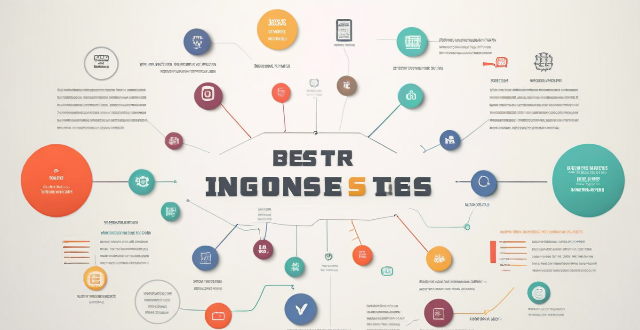The best tools for creating infographics are Canva, Piktochart, Visme, Infogram, Easel.ly, Adobe Illustrator, and Google Charts. Each tool has its unique features such as user-friendly interface, templates and elements, collaboration features, integration with other platforms, advanced editing tools, data visualization options, interactive elements, rich media support, analytics tracking, data connectivity, customization options, embedding capabilities, simplicity, chart and icon library, professional level tool, customization flexibility, learning curve, data visualization focus, embedding capability, and free to use. The choice of the tool depends on the specific needs, skill level, and budget of the user.

Best Tools for Creating Infographics
1. Canva
- User-friendly interface: Canva is known for its intuitive design, making it easy for beginners to create professional-looking infographics.
- Templates and elements: Offers a wide range of templates and design elements that can be customized to fit your needs.
- Collaboration features: Allows multiple users to work on the same project in real-time.
- Integration with other platforms: Canva integrates with platforms like Google Drive and Dropbox, making it easy to import and export files.
2. Piktochart
- Advanced editing tools: Piktochart provides more advanced editing tools compared to Canva, such as layering and grid alignment.
- Data visualization options: Offers a variety of charts and graphs to help you visualize data effectively.
- Custom branding: Allows you to upload your brand assets and use them throughout your designs.
- Export options: You can export your infographics in various formats, including JPEG, PNG, and PDF.
3. Visme
- Interactive elements: Visme allows you to add interactive elements like animations and hover effects to your infographics.
- Rich media support: Supports audio, video, and GIFs, making it suitable for creating multimedia infographics.
- Collaboration and sharing: Enables team collaboration and sharing of projects via a unique link or embedded code.
- Analytics tracking: Provides analytics tracking to monitor the performance of your infographics online.
4. Infogram
- Data connectivity: Infogram connects directly to databases and spreadsheets, allowing automatic updates to your infographics when the source data changes.
- Customization options: Offers numerous customization options for fonts, colors, and layouts.
- Embedding capabilities: Lets you embed infographics into websites easily using an HTML code.
- Free version available: Infogram offers a free version with basic features, making it accessible for individuals or small teams on a budget.
5. Easel.ly
- Focused on simplicity: Easel.ly is designed for quick and simple infographic creation without overwhelming users with too many options.
- Chart and icon library: Provides a library of charts and icons to choose from when creating your designs.
- Export and share: Allows exporting in various formats and sharing directly from the platform.
- Free plan available: Like Infogram, Easel.ly also offers a free plan for basic usage.
6. Adobe Illustrator
- Professional level tool: Adobe Illustrator is a professional vector graphics software that offers extensive control over your designs.
- Customization flexibility: Gives you complete freedom to customize every aspect of your infographic.
- Integration with other Adobe products: Seamlessly integrates with other Adobe products like Photoshop and InDesign.
- Learning curve: Due to its complexity, there is a steeper learning curve compared to other more user-friendly tools listed here.
7. Google Charts
- Data visualization focus: Primarily focused on data visualization, making it ideal for creating charts and graphs within infographics.
- Customizable options: Offers customization options for colors, labels, and fonts.
- Embedding capability: Allows embedding directly into websites using JavaScript code.
- Free to use: Being part of Google's suite of tools, Google Charts is completely free to use.
In conclusion, the best tool for creating infographics depends on your specific needs, skill level, and budget. Whether you prefer a simple drag-and-drop interface like Canva or require the advanced capabilities of Adobe Illustrator, there's a tool out there to help you create stunning infographics effectively.